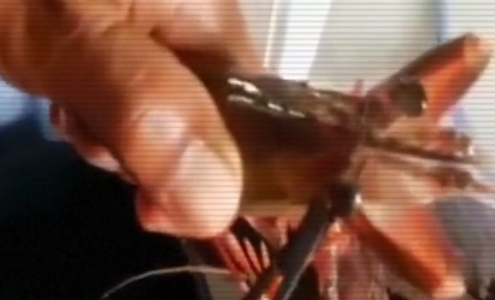Australian farmers defend cutting female prawns' eyes off to make them breed quicker
An Animals Australia petition to stop "eye stalk ablation" has reached 20,000 signatures.
Australian farmers have defended the practice of cutting off female prawns' eyes so they breed more quickly, claiming that the method amounts to "best practice", as a petition calling for an end to 'eye stalk ablation' reached almost 20,000 signatures.
The eyestalk ablation process involves farmers snipping off the eyes of female prawns thereby severing a gland behind the eye which moderates their reproductive hormones. The injured females then reach sexual maturity quicker and produce eggs more consistently despite being traumatised.
Farmers do not typically anesthetise the sea creatures before severing their eye stalks despite scientists claiming that they do feel pain. "Prawns who have their eye sliced open or cut off become disoriented, flick their tails [an escape reflex] and rub the traumatised area — all behaviours associated with pain," the campaign group Animals Australia said.
The group has started a petition to end the practice, which has so far been signed by 19,290 people. Australian Prawn Farmers Association president Matt West warned that the prawn farming industry would die without the controversial practice.
He told AP that the extra breeding capacity caused by the process meant that fewer of the animals needed to be farmed in captivity – allowing more of the population to live wild. "The industry prides itself on reducing stress on these animals. We are a very proactive industry and if there is a new method that becomes viable the industry will adopt it," he said.
Animals Australia argue that the practice is not necessary, pointing to prawn industries around the world that have abandoned it. "Research has found that, given the right environment, female prawns will breed without having their eye cut off. One of Latin America's largest group of prawn farms, SeaJoy, has already phased out this gruesome procedure," it said.
In 2015, a beach in Chile became the mass grave of thousands of prawns which washed up on the shore, leaving it completely red. Local fishermen said nearby power plants may had heated the water killing off the crustaceans in Coronel, around 330 miles from Santiago.

© Copyright IBTimes 2025. All rights reserved.





















